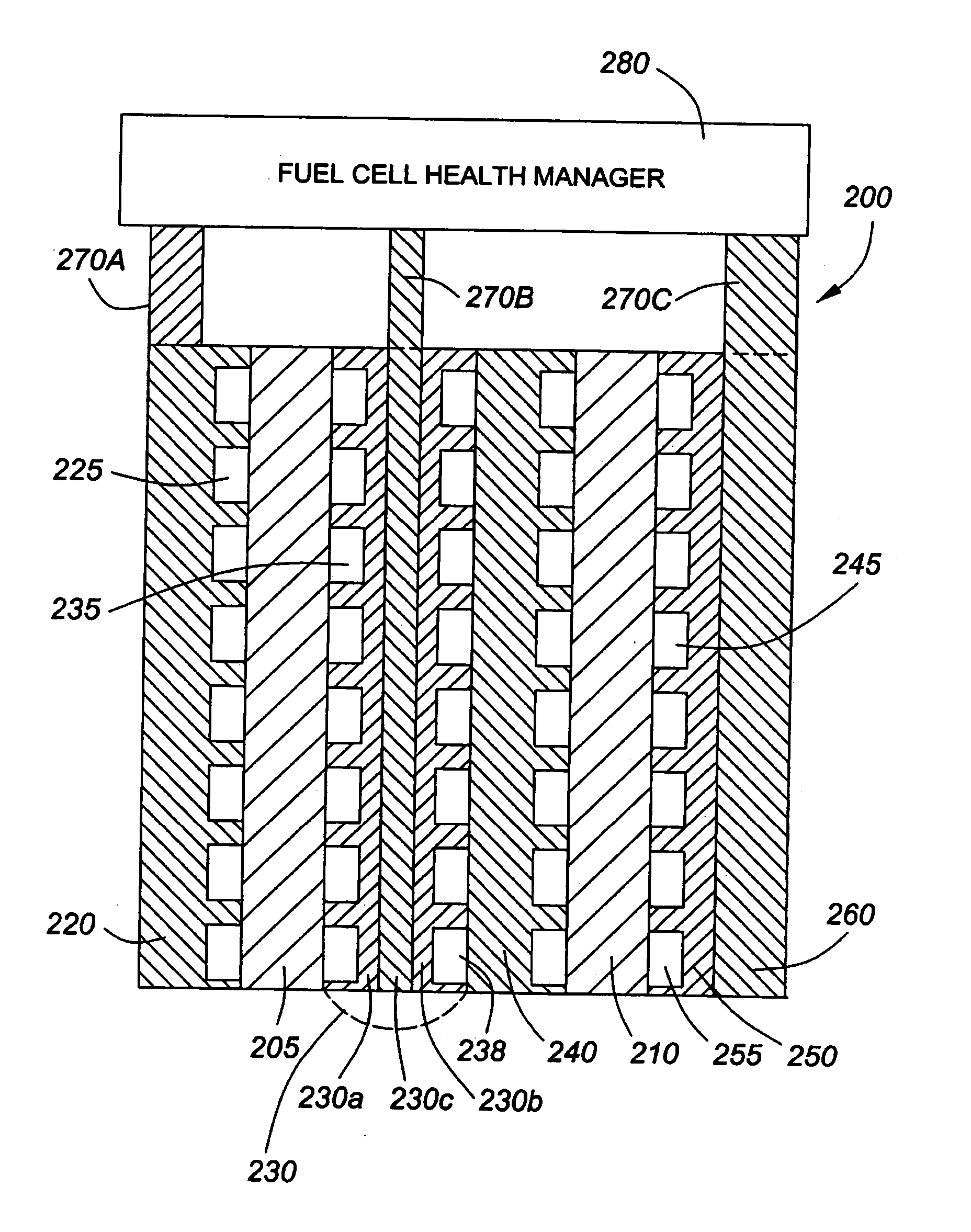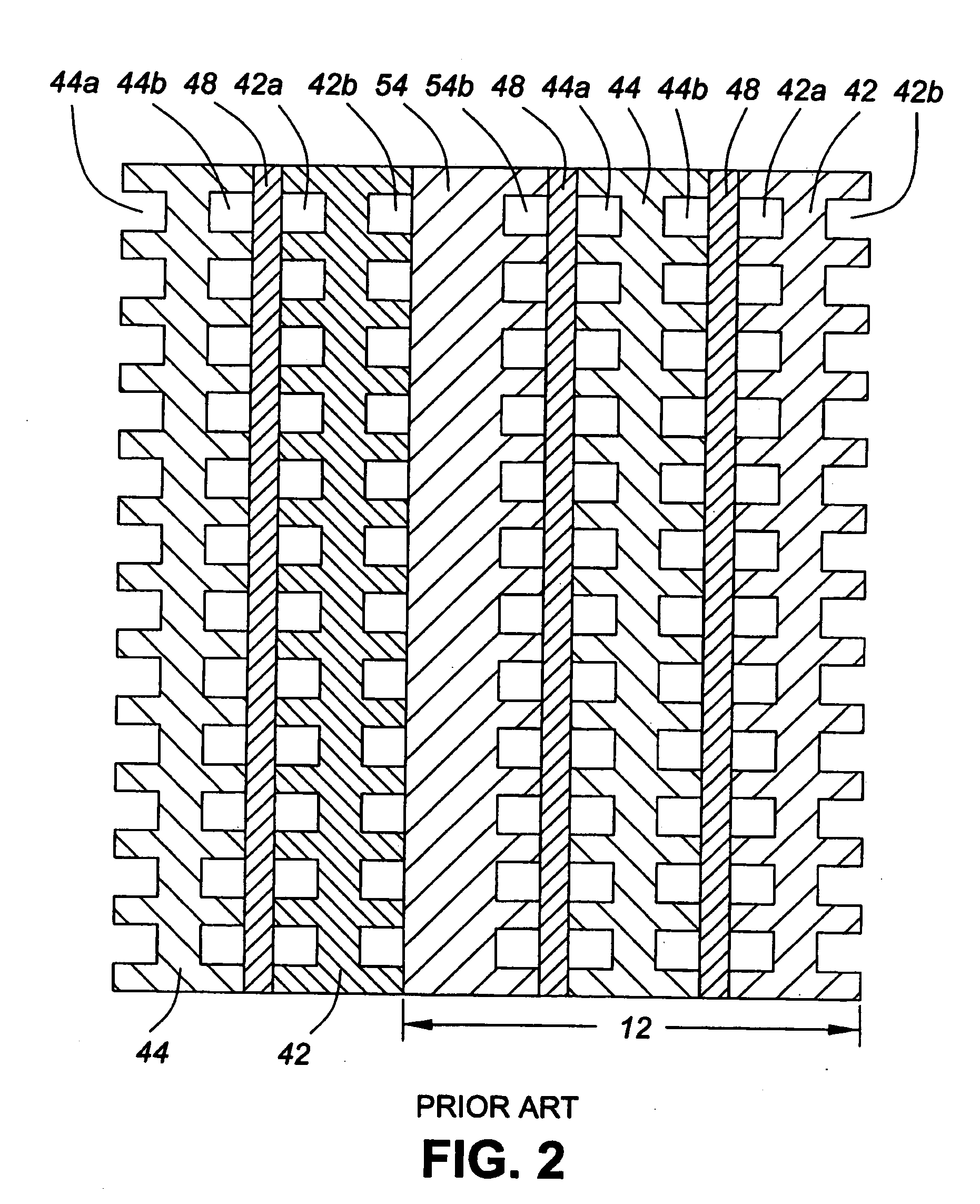Electrical interconnect for a fuel cell stack
- Summary
- Abstract
- Description
- Claims
- Application Information
AI Technical Summary
Benefits of technology
Problems solved by technology
Method used
Image
Examples
second embodiment
[0038]FIG. 4 illustrates a sectional view of a group of fuel cell assemblies 200 according to the present invention. The group 200 includes two fuel cells 205, 210, disposed between flow field plates 220, 230, 240, 250, where particular flow field plates also form electrical interconnects 220, 230, in accordance with the present invention and where a further electrical interconnect 260 of the present invention is also included. The flow field plates 220, 230, 240, 250 each provide one or more layers of flow field channels 225, 230, 235, 238, 245, 255, respectively. The first flow field plate 220 provides a set of flow field channels 225. This set of flow field channels 225 may either stream fuel or oxidant to the first fuel cell 205 depending on whether the first flow field plate 220 is disposed along the anode or cathode side of the first fuel cell 205. The second flow field plate 230 is constructed to provide two flow field channels 235, 238, where a first set of flow field channe...
third embodiment
[0042]FIG. 5 illustrates a sectional view of an electrical interconnect 300 according to the present invention. The electrical interconnect 300 is similar the electrical interconnect 230 of FIG. 4 where the electrical interconnect 300 could be arranged in a group of fuel cell assemblies as is electrical interconnect 230 in FIG. 4. In FIG. 5, this sectional view shows an oxidant flow field 320 on the oxidant distribution side of the plate 310. The oxidant flow field 320 is formed in the surface of the plate to allow for distribution of oxidant to the cathode and for removal of product water produced by the operation of the particular fuel cell. The serpentine flow pattern of the oxidant flow field 320 is known in the prior art and will not be further elaborated upon in this document.
[0043] The electrical interconnect 300 is made from a highly electrically conductive material such that the voltage drop across each plate member, provided by the current from an FCHM, is small. In additi...
PUM
 Login to View More
Login to View More Abstract
Description
Claims
Application Information
 Login to View More
Login to View More - R&D
- Intellectual Property
- Life Sciences
- Materials
- Tech Scout
- Unparalleled Data Quality
- Higher Quality Content
- 60% Fewer Hallucinations
Browse by: Latest US Patents, China's latest patents, Technical Efficacy Thesaurus, Application Domain, Technology Topic, Popular Technical Reports.
© 2025 PatSnap. All rights reserved.Legal|Privacy policy|Modern Slavery Act Transparency Statement|Sitemap|About US| Contact US: help@patsnap.com



